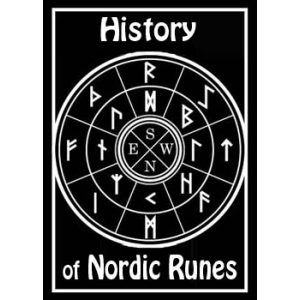
Book: History Of Nordic Runes by Anonymous
Runes are an alphabetic script used by the peoples of Northern Europe from the first century until well into the Middle Ages. In addition to their use as a written alphabet, the runes also served as a system of symbols used for magic and divination. Runes fell into disuse as the Roman Alphabets became the preferred script of most of Europe, but their forms and meanings were preserved in inscriptions and manuscripts.There is some debate over the origin of the "alphabet" aspect of the runes. Cases have been made for both Latin and Greek derivation, and several scholars are once again arguing in favor of both these theories. However, the strongest evidence still seems to point to a North Italic origin. The parallels between the two alphabets are too close to be ignored, particularly in the forms of the letters, as well as in the variable direction of the writing, and certain structural and even symbolic characteristics. This would also explain why so many of the runes resemble Roman letters, since both Italic and Latin scripts are derived from the Etruscan alphabet (itself a branch of the Western Greek family of alphabets). This theory would place the original creation of the futhark sometime before the 1st. century, when the Italic scripts were absorbed and replaced by the Latin alphabet. Linguistic and phonetic analysis points to an even earlier inception date, perhaps as far back as 200 B.C..
Free eBooks (Can Be Downloaded):
Thomas Potts - Discovery Of WitchesJulia Phillips - History Of Wicca In England
Anonymous - History Of Nordic Runes P9
